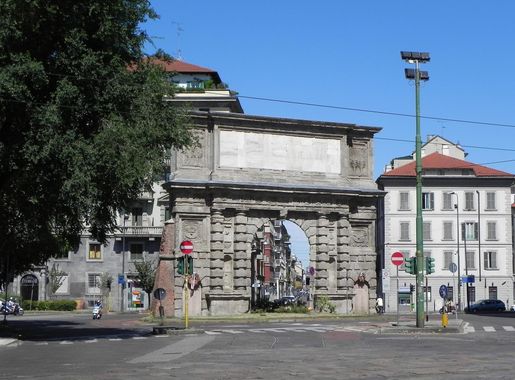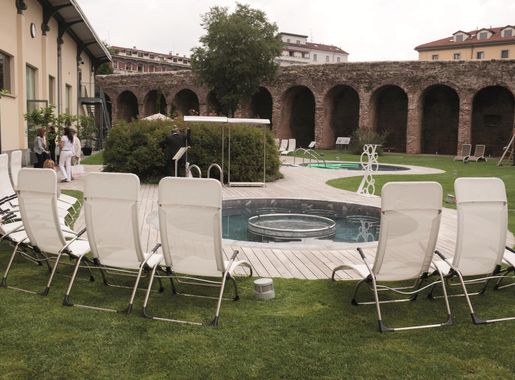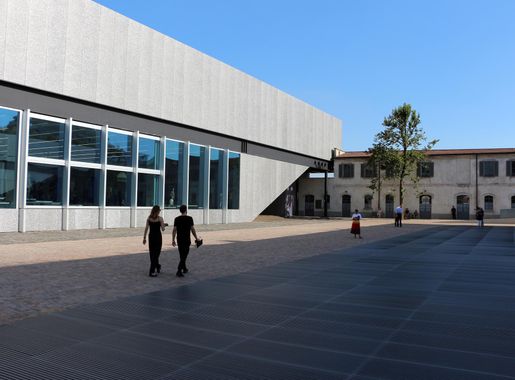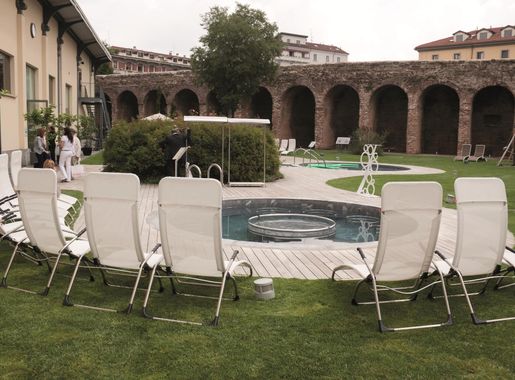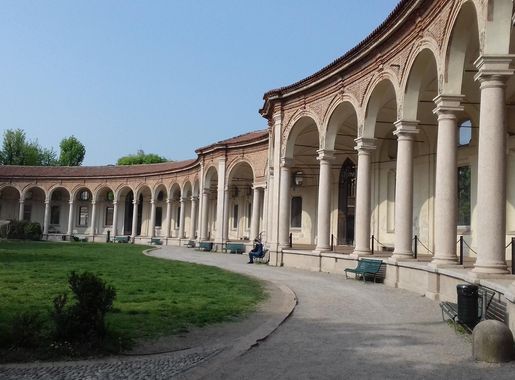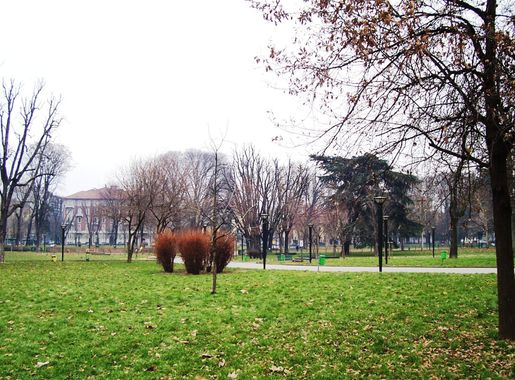
Porta Romana: Milan's Historical and Cultural Gem
Discover Porta Romana in Milan, a perfect blend of history, culture, and modern charm with its ancient landmarks, trendy cafes, boutique shops, and vibrant nightlife.
Porta Romana, a vibrant neighbourhood in Milan, Italy, effortlessly combines rich history with modern charm. This area, named after the ancient Roman gate that once stood here, offers visitors a unique blend of historic landmarks, trendy cafes, and boutique shops, making it a must-visit destination for any traveller. Wander through the picturesque streets and discover stunning architecture that tells the story of Milan's past. The iconic Porta Romana gate, constructed in the 16th century, serves as a beautiful reminder of the city's storied history. Nearby, the Terme di Milano offers a relaxing retreat where you can soak in thermal baths and unwind amidst lush gardens. Porta Romana is also a hub for contemporary culture and cuisine. From artisanal bakeries to stylish restaurants, the neighbourhood boasts an array of dining options that cater to all tastes. Enjoy a leisurely meal at one of the local trattorias or indulge in delicious gelato from a family-run gelateria. For those who love shopping, Porta Romana does not disappoint. The area is home to a variety of unique shops and boutiques where you can find everything from high-end fashion to one-of-a-kind souvenirs. Whether you're looking for the latest trends or a special memento to remember your trip, Porta Romana has something for everyone. In the evenings, the neighbourhood comes alive with a vibrant nightlife scene. Cozy wine bars and bustling pubs offer the perfect setting to enjoy a glass of Italian wine or a refreshing cocktail while mingling with locals and fellow travellers. With its rich history, diverse culinary scene, and lively atmosphere, Porta Romana provides an unforgettable experience for visitors to Milan.
Local tips in Porta Romana
- Visit the Porta Romana gate early in the morning to avoid crowds and capture stunning photos.
- Book a session at Terme di Milano in advance, especially on weekends, as it can get busy.
- Explore the local trattorias for authentic Italian cuisine at reasonable prices.
- Wear comfortable shoes as the best way to explore this neighbourhood is on foot.
- Check out local boutiques for unique fashion finds and souvenirs.
Porta Romana: Milan's Historical and Cultural Gem
Porta Romana, a vibrant neighbourhood in Milan, Italy, effortlessly combines rich history with modern charm. This area, named after the ancient Roman gate that once stood here, offers visitors a unique blend of historic landmarks, trendy cafes, and boutique shops, making it a must-visit destination for any traveller. Wander through the picturesque streets and discover stunning architecture that tells the story of Milan's past. The iconic Porta Romana gate, constructed in the 16th century, serves as a beautiful reminder of the city's storied history. Nearby, the Terme di Milano offers a relaxing retreat where you can soak in thermal baths and unwind amidst lush gardens. Porta Romana is also a hub for contemporary culture and cuisine. From artisanal bakeries to stylish restaurants, the neighbourhood boasts an array of dining options that cater to all tastes. Enjoy a leisurely meal at one of the local trattorias or indulge in delicious gelato from a family-run gelateria. For those who love shopping, Porta Romana does not disappoint. The area is home to a variety of unique shops and boutiques where you can find everything from high-end fashion to one-of-a-kind souvenirs. Whether you're looking for the latest trends or a special memento to remember your trip, Porta Romana has something for everyone. In the evenings, the neighbourhood comes alive with a vibrant nightlife scene. Cozy wine bars and bustling pubs offer the perfect setting to enjoy a glass of Italian wine or a refreshing cocktail while mingling with locals and fellow travellers. With its rich history, diverse culinary scene, and lively atmosphere, Porta Romana provides an unforgettable experience for visitors to Milan.
Iconic landmarks you can’t miss
Arco di Porta Ticinese
Discover the Arco di Porta Ticinese, a stunning historical landmark in Milan, showcasing rich heritage and vibrant city life.
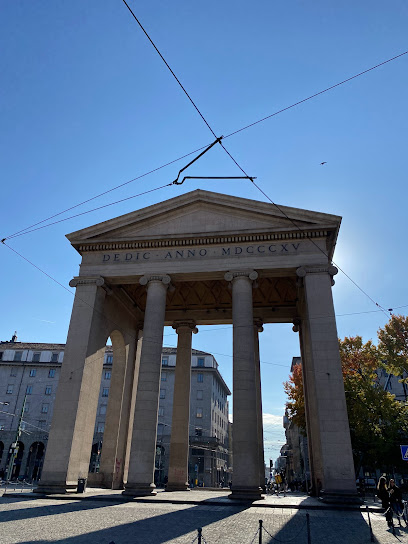
Arco di Porta Romana
Discover the grandeur of Arco di Porta Romana, a historic triumphal arch in Milan that symbolizes victory and invites exploration of the city's vibrant culture.
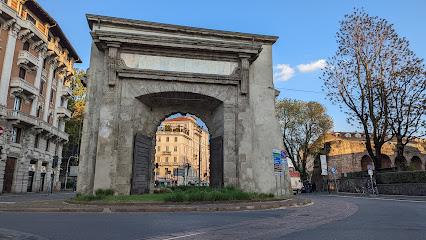
Monument of the Five Days of Milan
Explore the Monument of the Five Days of Milan, a vibrant historical landmark symbolizing the city's fight for freedom and resilience against oppression.
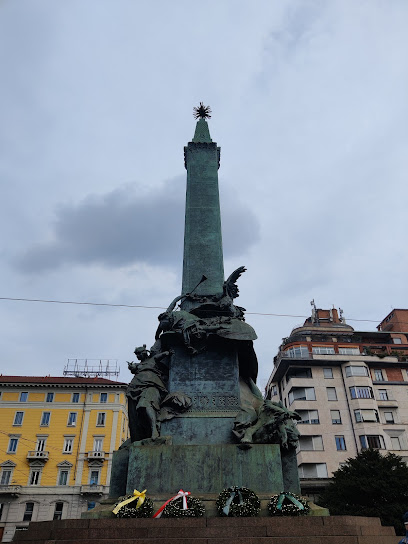
Arches of Ancient Porta Nuova
Discover the Arches of Ancient Porta Nuova, a magnificent monument in Milan that beautifully blends history and architecture, captivating all who visit.
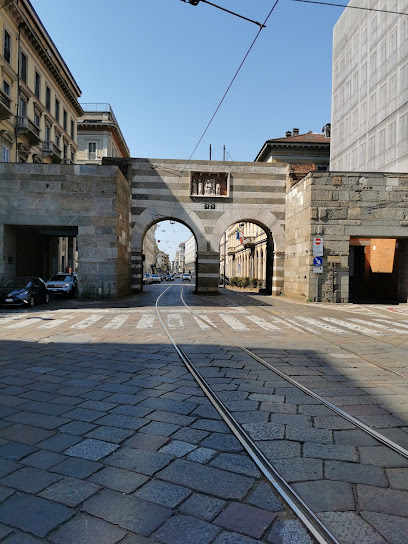
Porta Ticinese Medievale
Explore Porta Ticinese Medievale, a stunning historical landmark in Milan that embodies the city's rich heritage and vibrant culture.
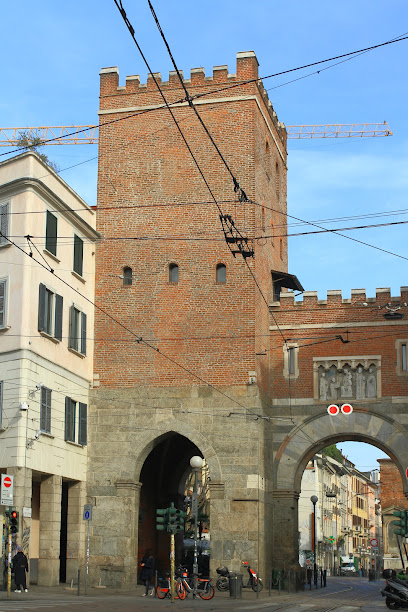
Porta Romana
Explore Milan from Porta Romana, a historic subway station that connects you to the city's vibrant culture, cafes, and attractions.
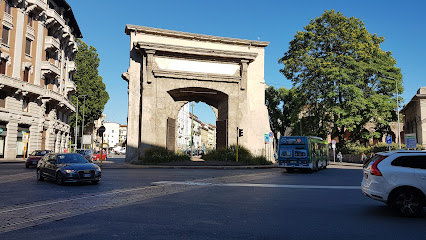
Palazzo Acerbi
Explore Palazzo Acerbi, a historical landmark in Milan, where enchanting architecture meets rich cultural heritage.
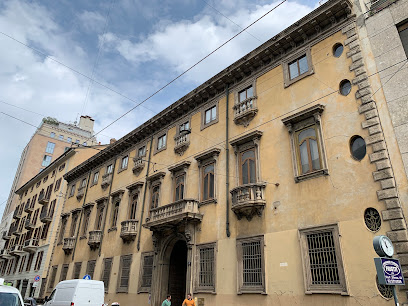
Monument to victims of terrorism and massacres
Explore Milan's Monument to Victims of Terrorism and Massacres, a solemn tribute reminding us of resilience in the face of adversity and the importance of peace.
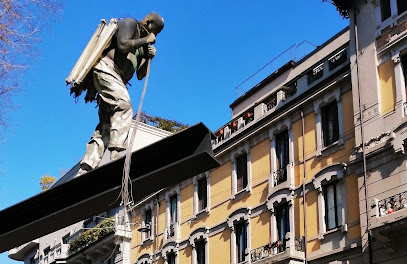
Monumento ai Caduti di Porta Romana
Explore the Monumento ai Caduti di Porta Romana in Milan, a striking cultural landmark honoring bravery and sacrifice amidst beautiful surroundings.
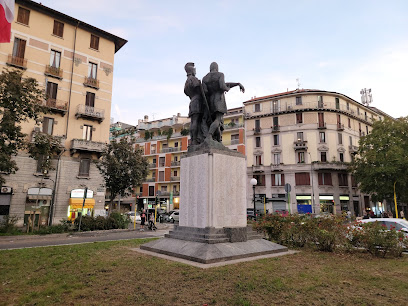
Torre Romana di porta Ticinese
Explore the Torre Romana di Porta Ticinese, a stunning symbol of Milan's ancient history and architectural elegance, nestled in the heart of the city.

Unmissable attractions to see
Duomo di Milano
Explore the stunning Duomo di Milano, a Gothic architectural gem and cultural epicenter, offering breathtaking rooftop views and rich history.
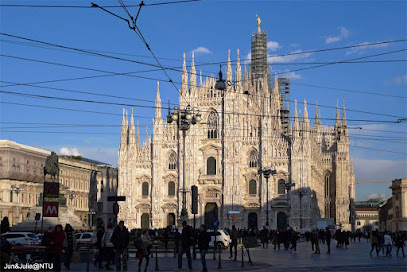
Sforzesco Castle
Explore the majestic Sforzesco Castle, a historical landmark in Milan offering art, culture, and stunning gardens in the heart of the city.
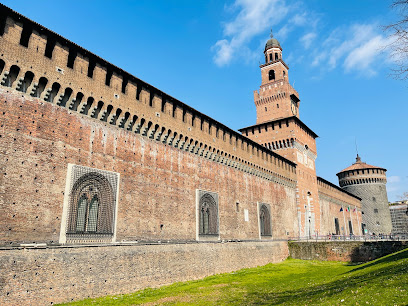
Indro Montanelli Gardens
Explore the serene beauty of Indro Montanelli Gardens, a tranquil urban oasis in Milan with lush landscapes and cultural attractions.
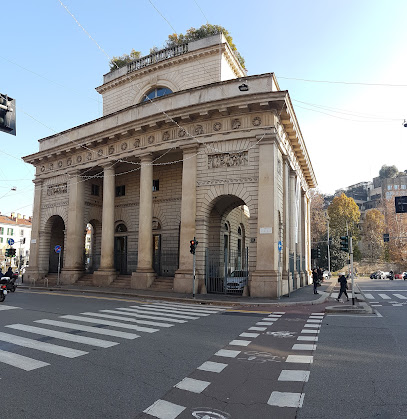
Santa Maria delle Grazie
Explore the stunning Santa Maria delle Grazie in Milan, home to Leonardo da Vinci's 'The Last Supper' and a masterpiece of Renaissance architecture.
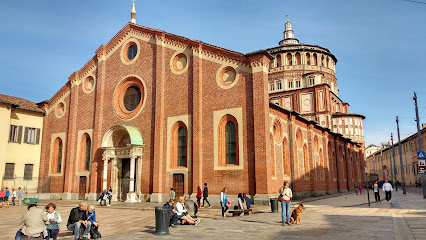
Cathedral Square
Experience the enchanting Cathedral Square in Milan, home to the stunning Milan Cathedral and a vibrant hub of culture and history.

Arco di Porta Romana
Explore the Arco di Porta Romana, Milan's iconic archway symbolizing history, culture, and architectural beauty in the heart of Italy.
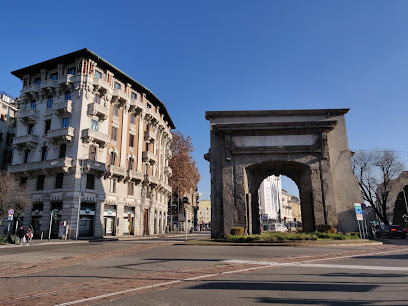
Walk of Fame Milano
Discover the glamour of Hollywood in Milan at the breathtaking Walk of Fame, where international stars shine bright on the streets of Italy.
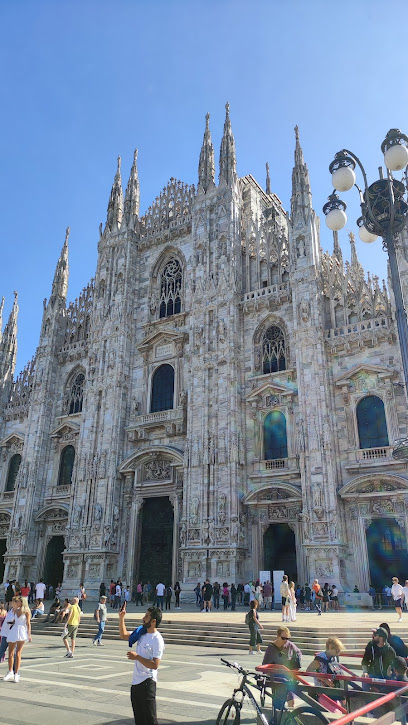
Giardino Roberto Bazlen e Luciano Foà
Experience the tranquility of Giardino Roberto Bazlen e Luciano Foà, Milan's serene park perfect for relaxation and family outings amidst urban vibrancy.
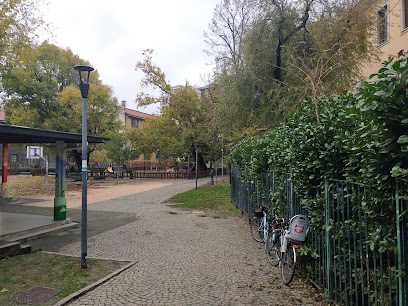
Palazzo Annoni
Explore the stunning Palazzo Annoni in Milan, a historical landmark that embodies the city's rich architectural and cultural heritage.
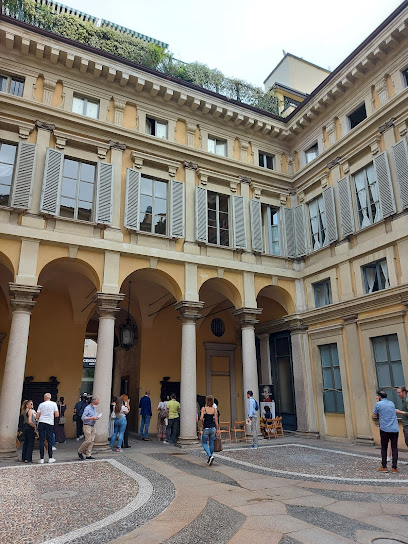
Artificial storm
Immerse yourself in the breathtaking spectacle of the Artificial Storm in Milan, where art meets nature in a mesmerizing display of water and light.
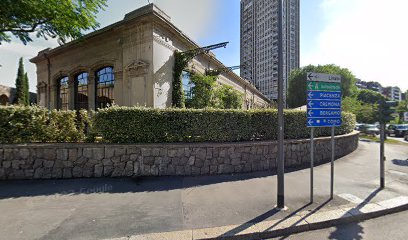
Essential places to dine
Trattoria Mibabbo
Experience authentic Tuscan cuisine at Trattoria Mibabbo in Milan - where tradition meets flavor in every dish.
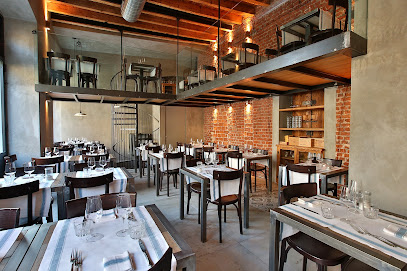
Trattoria Trippa
Discover authentic Italian cuisine at Trattoria Trippa in Milan - where tradition meets flavor in every dish.
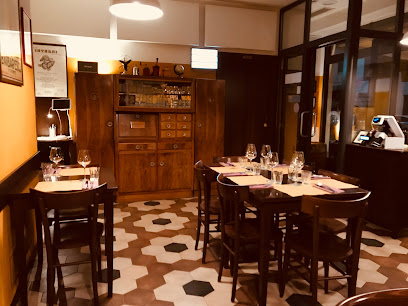
Un Sacco Bello
Experience authentic Roman cuisine at Un Sacco Bello in Milan – where tradition meets taste in every delicious dish.
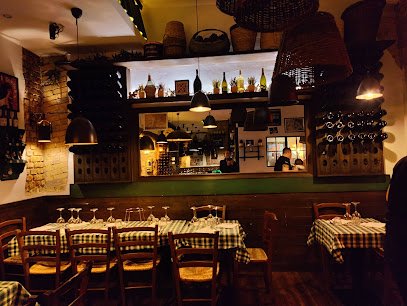
Un Posto a Milano
Discover authentic Italian flavors at Un Posto a Milano - where tradition meets modernity in every bite.

Casa Tua Osteria
Experience authentic Italian flavors at Casa Tua Osteria in Milan, where tradition meets warmth and culinary excellence.
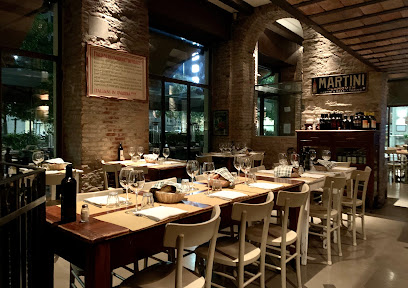
Particolare Milano
Discover exquisite Italian cuisine at Particolare Milano, where tradition meets innovation in every dish.

Abbottega
Discover authentic Roman cuisine at Abbottega in Milan - where traditional flavors meet modern dining experiences.
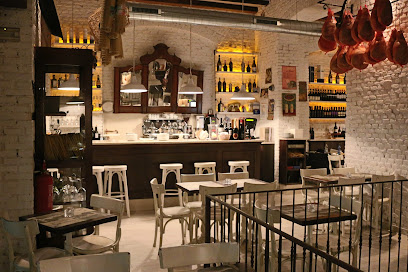
Pier 52 Bistrot
Experience exquisite seafood and Mediterranean delights at Pier 52 Bistrot in Milan – where every meal is a celebration of flavor.
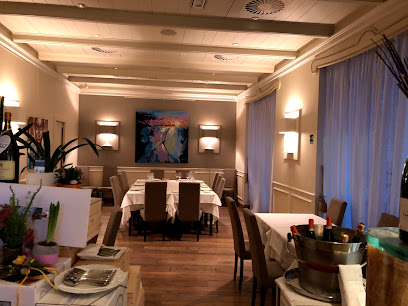
Tiraboschi6 - Chiacchiere, Vino & Cucina
Discover authentic Italian cuisine at Tiraboschi6 in Milan - where tradition meets modern culinary artistry.
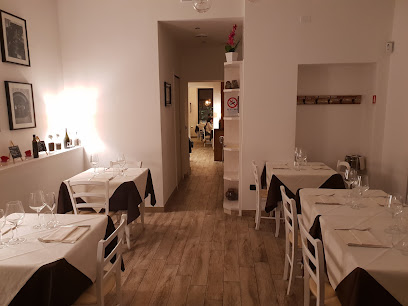
Autem Milano
Experience culinary excellence at Autem Milano – where tradition meets innovation in every dish.
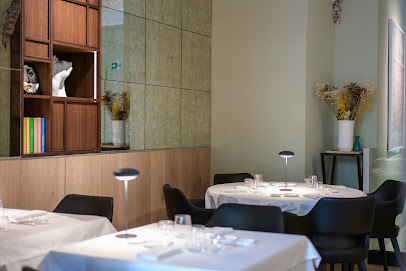
Markets, malls and hidden boutiques
Galleria Vittorio Emanuele II
Discover Milan's Galleria Vittorio Emanuele II, where luxury shopping meets stunning architecture in an iconic Italian landmark.
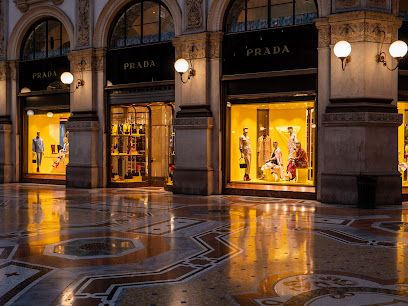
Rinascente Milano
Discover the epitome of Italian fashion and lifestyle at Rinascente Milano, a luxury department store featuring top brands and stunning views of the Duomo.
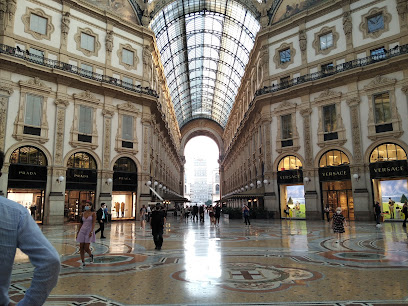
HANGAR 107 - Milano - Zona P.ta Romana
Explore Hangar 107 in Milan, a vibrant outlet store offering a diverse range of fashion, accessories, and more in the heart of Italy's fashion capital.
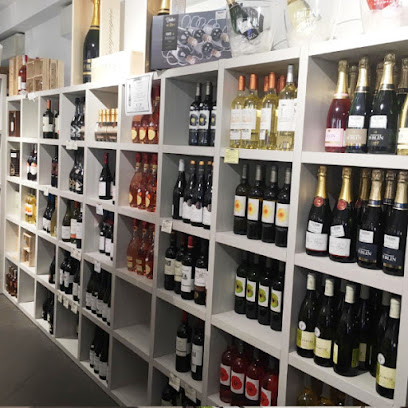
Alviero Martini Factory Store
Explore the Alviero Martini Factory Store in Milan for a unique shopping experience of Italian elegance and geographic-inspired fashion pieces.
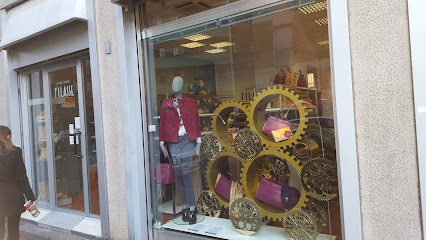
Libero Milano
Discover the latest in Milanese fashion at Libero Milano, a premier clothing store offering stylish apparel and exceptional service.
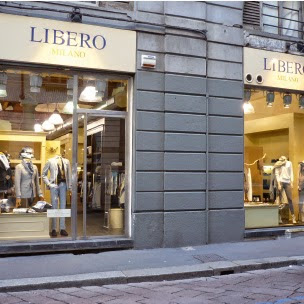
Atelier Pièces Uniques
Explore Atelier Pièces Uniques in Milan for handcrafted treasures that showcase the beauty of Italian craftsmanship and design.
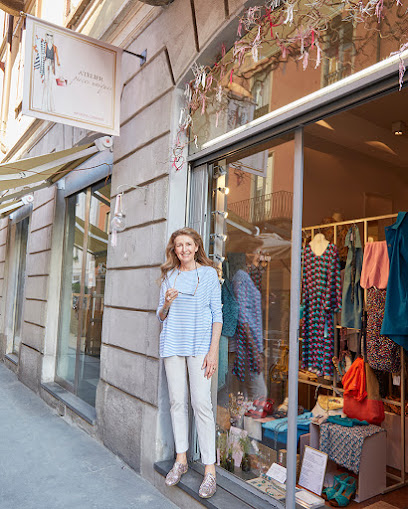
Fantafilo
Discover Milan's Fantafilo: A Unique Home Goods Store with Fashion, Jewelry, and More!

Outlet prima classe
Discover stylish apparel at Outlet Prima Classe in Milan, where fashion meets affordability in a charming shopping atmosphere.
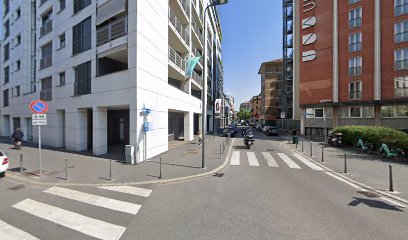
Pelle Nuda Milano artigianato italiano
Explore the art of Italian leather craftsmanship at Pelle Nuda Milano, where unique collections await to enhance your style and elegance.
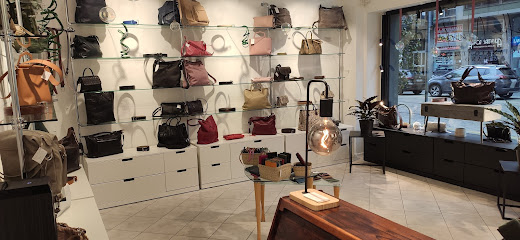
AdvStore - Porta Romana
Discover unbeatable deals and a vibrant shopping experience at AdvStore - Porta Romana, the ultimate outlet mall in Milan.
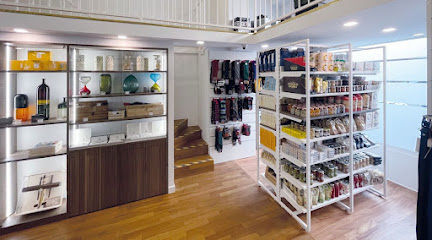
Essential bars & hidden hideouts
Madeira
Discover Café Madeira in Milan: A vibrant bar offering delightful drinks and a lively atmosphere for tourists and locals alike.
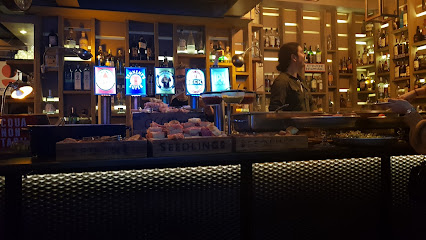
Next
Experience the lively atmosphere and delicious grilled dishes at Next, a top pub in the heart of Milan, perfect for unwinding after a day of exploration.
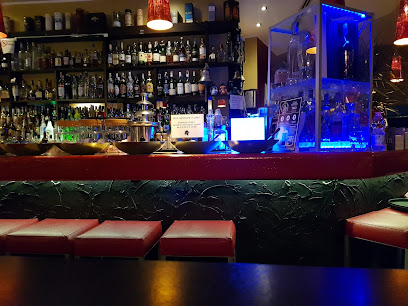
Swami Cafè
Discover the essence of Milan at Swami Cafè, where local flavors meet a vibrant atmosphere in the heart of the city.

The Spirit
Discover the essence of Milanese nightlife at The Spirit, where innovative cocktails meet a vibrant atmosphere in a chic setting.
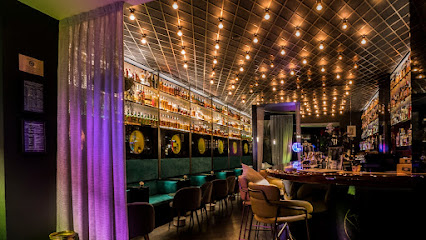
Bar Charlie
Discover Bar Charlie in Milan, where cocktails meet a vibrant atmosphere, perfect for unwinding after a day of exploration.
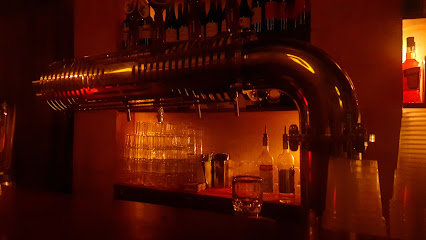
Les Rouges Cucina & Cocktails
Experience the fusion of fine dining and exquisite cocktails at Les Rouges Cucina & Cocktails, a must-visit destination in Milan's vibrant culinary scene.
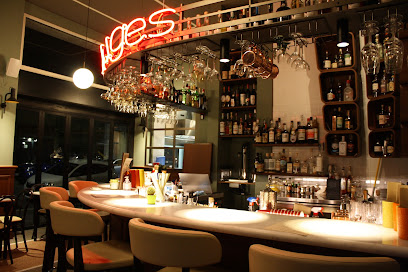
Vice - coffee cocktail wine Bar
Discover the perfect blend of coffee, cocktails, and wine at Vice, Milan's chic bar destination for locals and tourists alike.
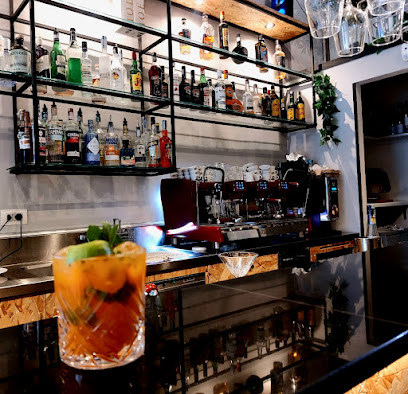
Bar Porta Romana
Experience the true essence of Milan at Bar Porta Romana, where exceptional drinks and a cozy atmosphere await every visitor.
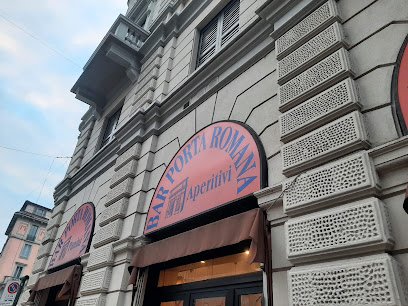
Dopotutto
Experience the vibrant Milan nightlife at Dopotutto, a cozy bar with delightful drinks and a welcoming atmosphere.

Barbisa 1920
Experience the charm of Barbisa 1920, Milan's vibrant bar and cafeteria, where delightful drinks and a cozy atmosphere await you.
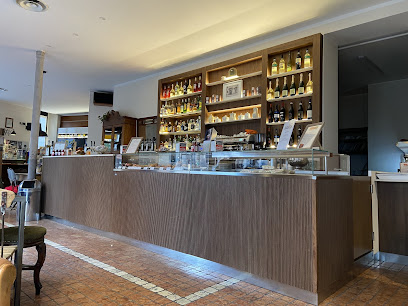
Local Phrases
-
- HelloCiao
[chow] - GoodbyeArrivederci
[ah-ree-veh-dehr-chee] - YesSì
[see] - NoNo
[noh] - Please/You're welcomePer favore/Prego
[pehr fah-voh-reh/preh-goh] - Thank youGrazie
[grah-tsyeh] - Excuse me/SorryScusa/Mi dispiace
[skoo-sah/mee dee-spyah-cheh] - How are you?Come stai?
[koh-meh stah-ee] - Fine. And you?Bene. E tu?
[beh-neh. eh too] - Do you speak English?Parli inglese?
[pahr-lee een-gleh-zeh] - I don't understandNon capisco
[nohn kah-pee-skoh]
- HelloCiao
-
- I'd like to see the menu, pleaseVorrei vedere il menu, per favore
[vor-ray veh-deh-reh eel meh-noo, pehr fah-voh-reh] - I don't eat meatNon mangio carne
[nohn mahn-joh kar-neh] - Cheers!Salute!
[sah-loo-teh] - I would like to pay, pleaseVorrei pagare, per favore
[vor-ray pah-gah-reh, pehr fah-voh-reh]
- I'd like to see the menu, pleaseVorrei vedere il menu, per favore
-
- Help!Aiuto!
[ah-yoo-toh] - Go away!Vai via!
[vah-ee vyah] - Call the Police!Chiama la polizia!
[kyah-mah lah poh-lee-tsya] - Call a doctor!Chiama un dottore!
[kyah-mah oon doht-toh-reh] - I'm lostMi sono perso
[mee soh-noh pehr-soh] - I'm illSto male
[stoh mah-leh]
- Help!Aiuto!
-
- I'd like to buy...Vorrei comprare...
[vor-ray kohm-prah-reh] - I'm just lookingSto solo guardando
[stoh soh-loh gwar-dahn-doh] - How much is it?Quanto costa?
[kwahn-toh koh-stah] - That's too expensiveÈ troppo caro
[eh trohp-poh kah-roh] - Can you lower the price?Puoi abbassare il prezzo?
[pwah-ee ahb-bahs-sah-reh eel preh-tsoh]
- I'd like to buy...Vorrei comprare...
-
- What time is it?Che ora è?
[keh oh-rah eh] - It's one o'clockÈ l'una
[eh loo-nah] - Half past (10)Le dieci e mezza
[leh dee-eh-chee eh meh-tzah] - MorningMattina
[maht-tee-nah] - AfternoonPomeriggio
[poh-meh-ree-joh] - EveningSera
[seh-rah] - YesterdayIeri
[yeh-ree] - TodayOggi
[ohd-jee] - TomorrowDomani
[doh-mah-nee] - 1Uno
[oo-noh] - 2Due
[dweh] - 3Tre
[treh] - 4Quattro
[kwah-troh] - 5Cinque
[cheen-kweh] - 6Sei
[seh-ee] - 7Sette
[seht-teh] - 8Otto
[oht-toh] - 9Nove
[noh-veh] - 10Dieci
[dee-eh-chee]
- What time is it?Che ora è?
-
- Where's a/the...?Dov'è un/il...?
[doh-veh oon/eel] - What's the address?Qual è l'indirizzo?
[kwahl eh leen-dee-reet-soh] - Can you show me (on the map)?Puoi mostrarmi (sulla mappa)?
[pwah-ee mohs-trahr-mee (sool-lah mahp-pah)] - When's the next (bus)?Quando passa il prossimo (autobus)?
[kwahn-doh pahs-sah eel prohs-see-moh (ow-toh-boos)] - A ticket (to ....)Un biglietto (per ....)
[oon beel-lyet-toh (pehr)]
- Where's a/the...?Dov'è un/il...?
History of Porta Romana
-
Porta Romana, literally meaning 'Roman Gate', dates back to the Roman Empire when it served as one of the main entry points into Mediolanum, the ancient name for Milan. Constructed in the 3rd century AD, this gate marked the beginning of the road leading to Rome, showcasing the strategic importance of Milan as a transport hub in antiquity.
-
During the Middle Ages, Porta Romana evolved as a vital thoroughfare for trade and pilgrimage. The area saw the construction of numerous chapels and monasteries, including the nearby Church of San Lorenzo, which became a significant religious site. The gate itself underwent renovations, reflecting the changing architectural styles of the era.
-
The Renaissance period brought a cultural bloom to Porta Romana, with the establishment of elegant palaces and gardens. Artists and architects like Bramante left their mark on the area, contributing to the rich cultural tapestry that characterized Milan during this vibrant time. The neighborhood became a melting pot of artistic innovation.
-
In the early 19th century, during the Napoleonic era, Porta Romana was transformed further with the construction of new buildings and urban planning initiatives aimed at modernizing Milan. The gate itself was modified to accommodate the growing traffic, symbolizing the shift toward a more modern urban landscape.
-
The 20th century saw significant changes in Porta Romana as Milan expanded rapidly. The neighborhood became known for its vibrant nightlife and cultural scene, attracting artists, musicians, and intellectuals. The establishment of theaters and cafes contributed to its identity as a hub of creativity and social interaction.
-
Today, Porta Romana is a dynamic neighborhood that merges its historical roots with contemporary life. The area features a mix of traditional architecture and modern developments, along with a diverse population. Cultural events, art exhibitions, and culinary festivals continue to celebrate the rich heritage of this historic gateway to Milan.
Porta Romana Essentials
-
Porta Romana is conveniently accessible from various neighborhoods in Milan. If you're coming from the city center, take the Metro Line 3 (Yellow Line) to Porta Romana station. From Central Station, you can also take Tram Line 9 or a taxi, which takes about 10-15 minutes. The area is well-connected by bus services that run from other key neighborhoods, such as Navigli and Brera.
-
Porta Romana is a pedestrian-friendly neighborhood, making it easy to explore on foot. For longer distances, Milan's public transportation system is efficient and reliable. The Metro Line 3 runs through the area, and trams and buses are available to reach further destinations. Bicycles can also be rented from various bike-sharing services, allowing for a leisurely ride through the city's streets.
-
Porta Romana is generally a safe neighborhood for tourists. However, be cautious in less crowded areas, especially at night. While incidents of petty crime, like pickpocketing, can occur, they are not prevalent. Areas around the train stations or less populated streets might have higher crime rates, so it's advisable to stay alert and keep personal belongings secure.
-
In case of an emergency, dial 112 for police, ambulance, or fire services. The nearest hospital, Ospedale Maggiore Policlinico, is equipped for medical emergencies. Familiarize yourself with the location of the nearest pharmacy; they are commonly found throughout the neighborhood and can assist with minor health issues. It's advisable to have travel insurance that covers emergencies.
-
Fashion: Do dress stylishly as Milan is known for its fashion; however, be respectful of local customs, especially in religious sites. Religion: Do respect the cultural significance of churches; cover shoulders and knees when visiting. Public Transport: Do validate your ticket before boarding and be courteous to others. Don't eat or drink on public transport. Greetings: Do greet with 'Buongiorno' or 'Buonasera' depending on the time of day. Eating & Drinking: Do try local specialties such as risotto and gelato. Don't waste food or leave large portions on your plate, as it's considered impolite.
-
To experience Porta Romana like a local, visit the Mercato di Porta Romana, a vibrant food market where you can find fresh produce and regional delicacies. Engage with local baristas for a perfect espresso and don’t shy away from trying the aperitivo culture at nearby bars in the early evening. Explore the picturesque streets by bicycle to uncover hidden gems, and don’t miss the historical landmarks including the ancient Porta Romana gate and the beautiful Basilica di San Lorenzo.
Trending Landmarks in Porta Romana
Nearby Cities to Porta Romana
-
Things To Do in Bergamo
-
Things To Do in Lugano
-
Things To Do in Locarno
-
Things To Do in Ascona
-
Things To Do in Parma
-
Things To Do in Genoa
-
Things To Do in St. Moritz
-
Things To Do in Turin
-
Things To Do in Zermatt
-
Things To Do in Verona
-
Things To Do in Cinque Terre
-
Things To Do in Arosa
-
Things To Do in Davos
-
Things To Do in Grindelwald
-
Things To Do in Murren

